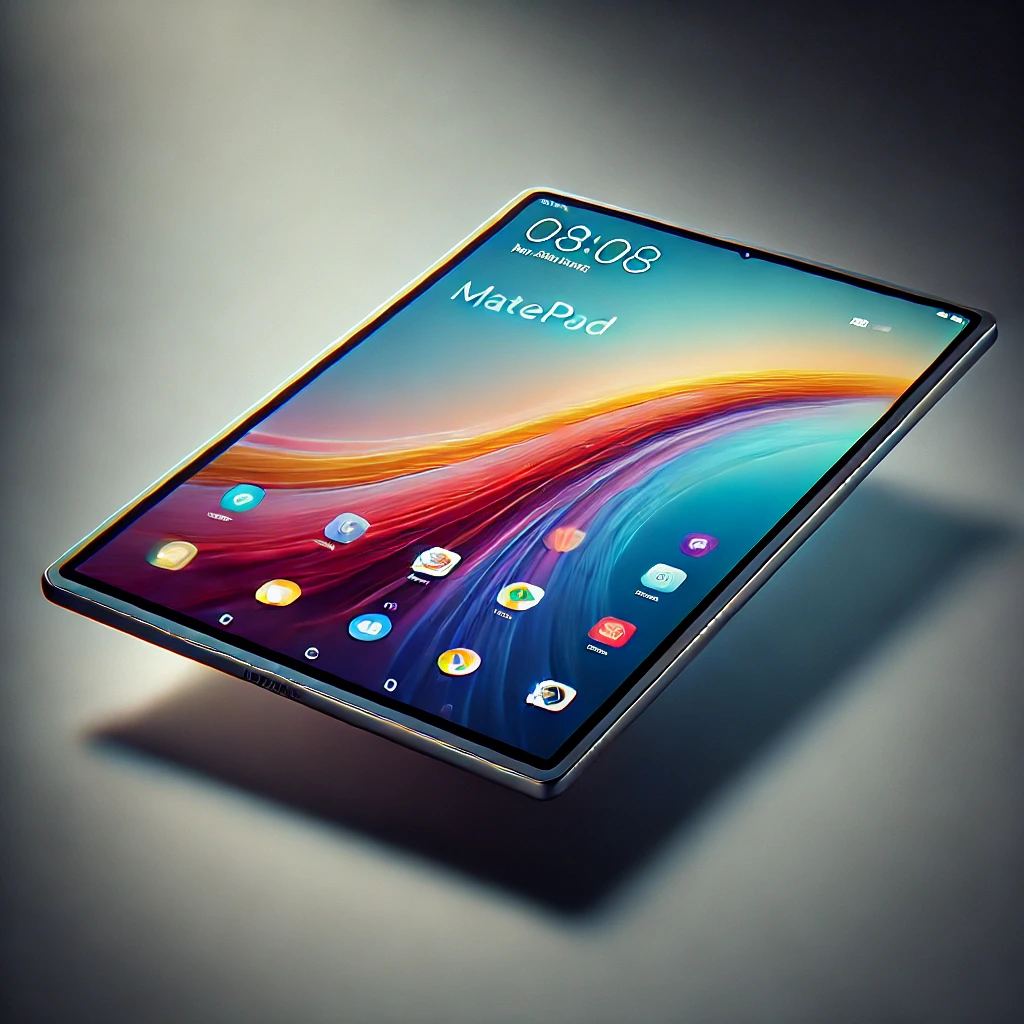Huawei Tablets 2024: In-Depth Review of Premium Features, Performance, and Software Limitations
Huawei’s tablet lineup has gained attention for offering high-quality hardware at competitive prices. Here’s a review of Huawei’s tablet segment, focusing on key models, strengths, weaknesses, and market position:
Key Models:
- Huawei MatePad Pro 12.6 (2022)
- Display: 12.6-inch OLED, 2560×1600 resolution.
- Performance: Kirin 9000E processor, up to 8GB RAM.
- Software: HarmonyOS 2.0.
- Features: Stylus support, wireless charging, 100% DCI-P3 color gamut.
- Pros: Premium OLED display, fast performance, excellent battery life, multi-tasking capabilities.
- Cons: Lack of Google Mobile Services (GMS), limiting access to popular apps.
- Huawei MatePad 11
- Display: 10.95-inch IPS LCD, 120Hz refresh rate.
- Performance: Qualcomm Snapdragon 865, 6GB RAM.
- Software: HarmonyOS.
- Features: Pen and keyboard support, desktop mode.
- Pros: Smooth performance, good for productivity, 120Hz screen.
- Cons: Again, no Google apps, limited software ecosystem.
- Huawei MatePad T10s
- Display: 10.1-inch Full HD display.
- Performance: Kirin 710A chipset, 2GB/3GB RAM.
- Software: EMUI 10.1 (based on Android).
- Features: Entry-level device, basic media consumption.
- Pros: Affordable, decent display for media.
- Cons: Low RAM, limited app ecosystem.
Strengths:
- Display Quality: Huawei consistently delivers tablets with excellent displays. The MatePad Pro 12.6’s OLED screen is a standout, offering vibrant colors, deep blacks, and a high level of brightness, making it ideal for media consumption and creative work.
- Performance: Huawei’s high-end tablets, especially the MatePad Pro, boast solid processors like the Kirin 9000E or Snapdragon chips, providing competitive performance for both productivity tasks and entertainment.
- Hardware Design: Huawei tablets have sleek, premium builds with high-quality materials, often rivaling offerings from Apple and Samsung. They also integrate features like stylus support (M-Pencil), keyboard accessories, and wireless charging.
- Battery Life: Huawei tablets tend to have strong battery performance, lasting all day under typical use.
Weaknesses:
- Lack of Google Mobile Services (GMS): The absence of GMS on Huawei tablets is a significant drawback, especially for users in the West. Popular apps like Gmail, YouTube, and Google Maps are unavailable, requiring workarounds or reliance on Huawei’s AppGallery, which doesn’t have the same breadth of apps.
- Software Ecosystem: While HarmonyOS is a functional and fluid operating system, it’s relatively new and lacks the app ecosystem depth that Android and iPadOS offer. The limited app library can be a dealbreaker for users who depend on certain apps for work or entertainment.
- Market Availability: Due to trade restrictions, Huawei has lost a significant share of the international tablet market, especially in the U.S. and Europe. Availability and software updates may be inconsistent in some regions.
Huawei’s Position in the Market:
- Competitive in China and Asia: Huawei remains competitive in China, where the lack of Google services is less of an issue, and HarmonyOS integrates well with the broader Huawei ecosystem of phones, wearables, and laptops.
- Global Market Challenges: Outside China, Huawei has faced difficulties due to the absence of GMS, with Samsung and Apple dominating the high-end tablet market. However, Huawei’s pricing strategy makes its tablets attractive to users looking for premium features at lower prices, provided they are willing to compromise on software availability.
Verdict:
Huawei’s tablets are strong contenders in terms of hardware, display, and performance. They are especially well-suited for users comfortable with Huawei’s software ecosystem or those who don’t rely heavily on Google services. However, the limited app availability and regional restrictions make them a less compelling choice for many international users compared to Android and iOS tablets.


